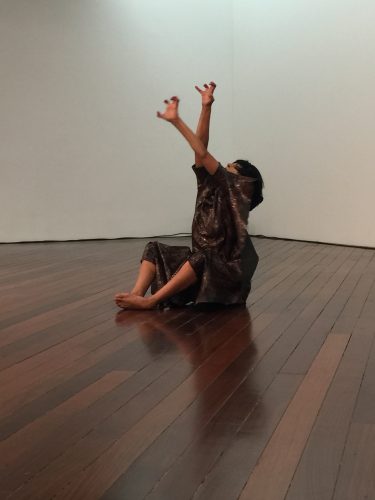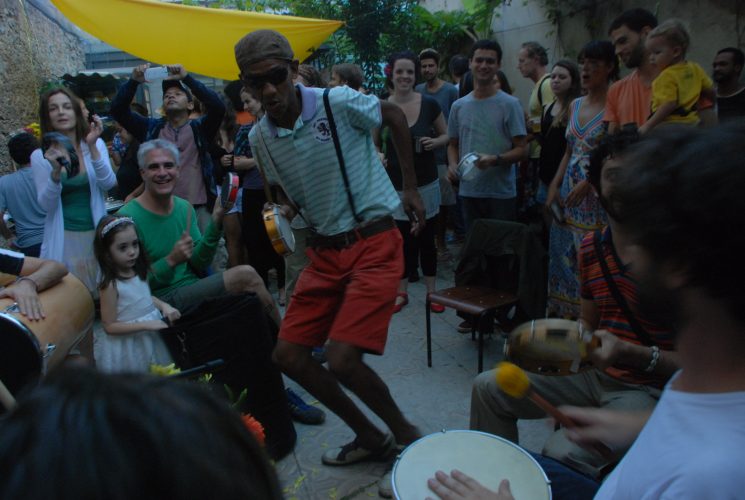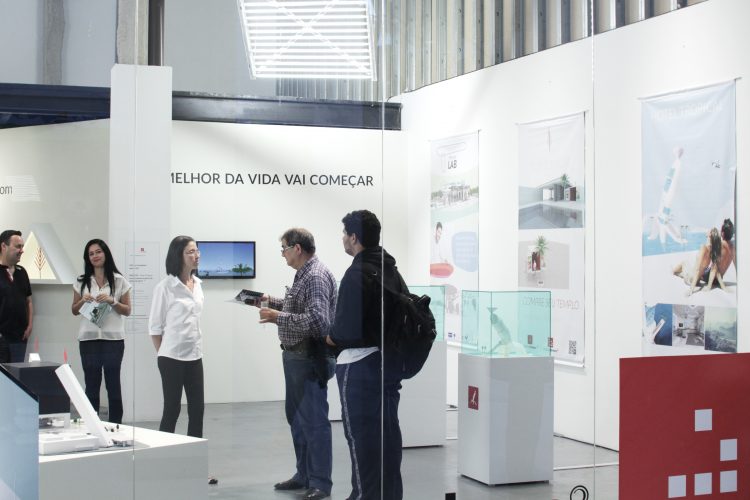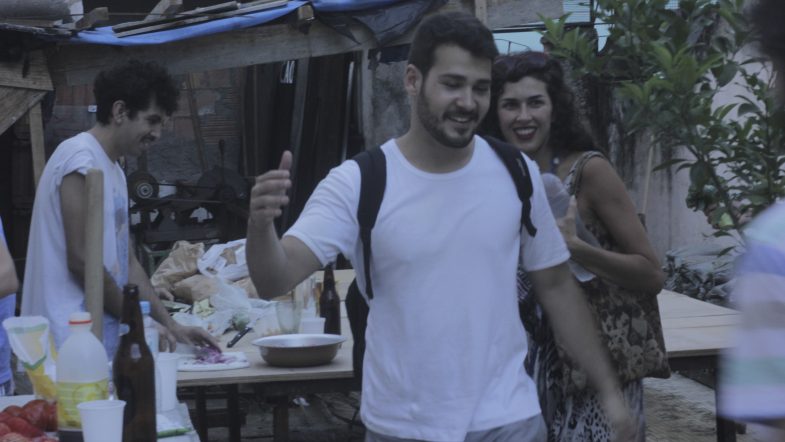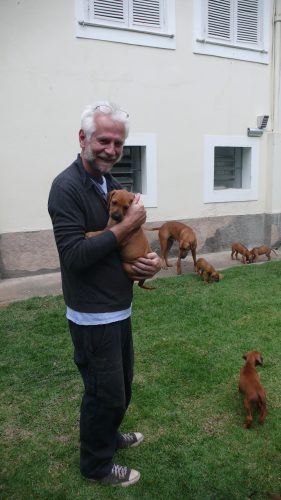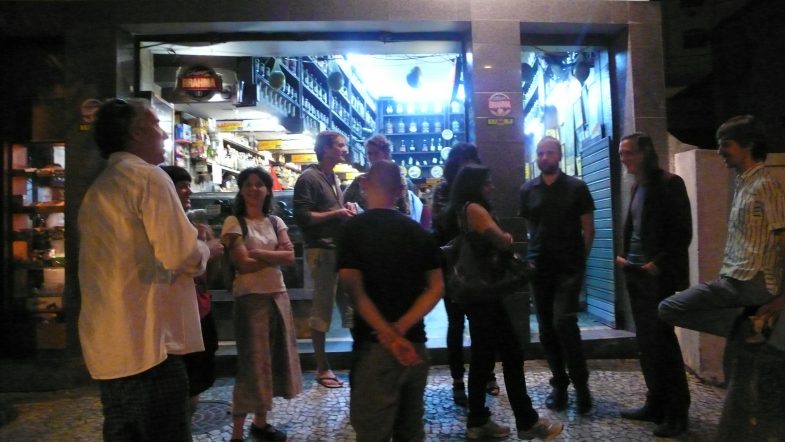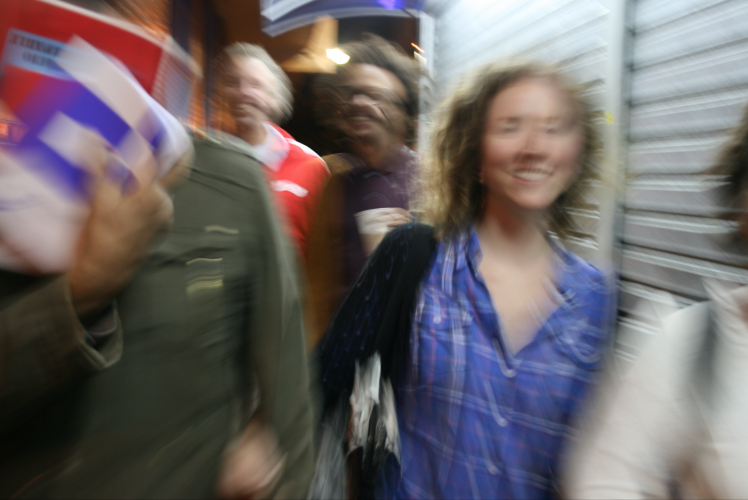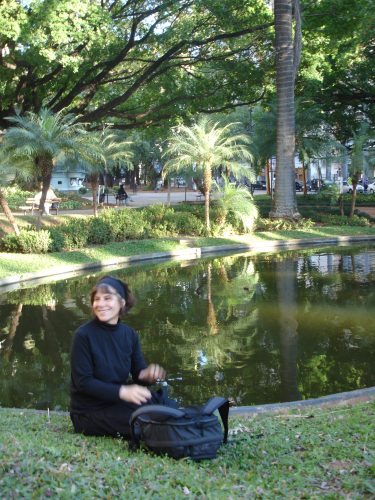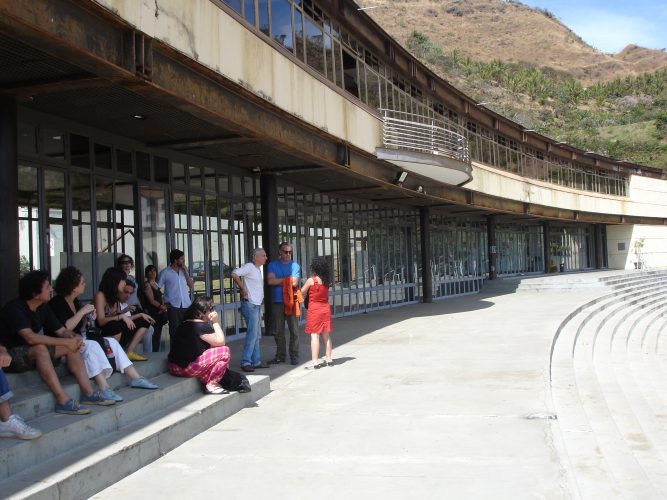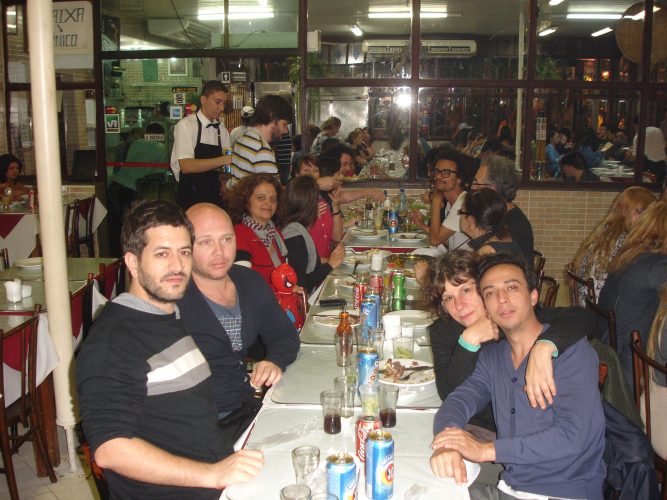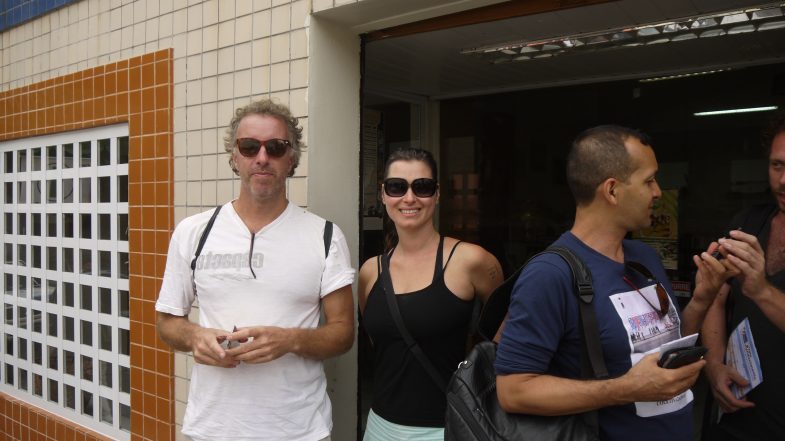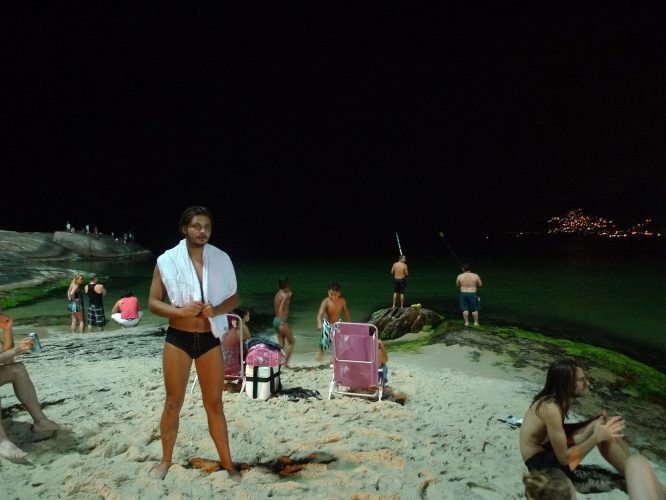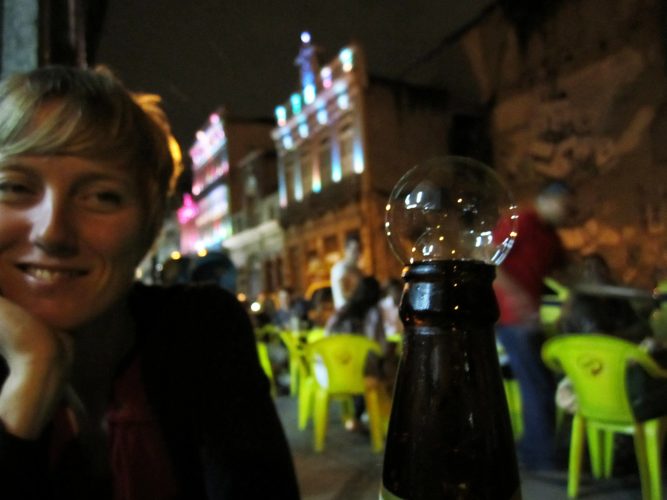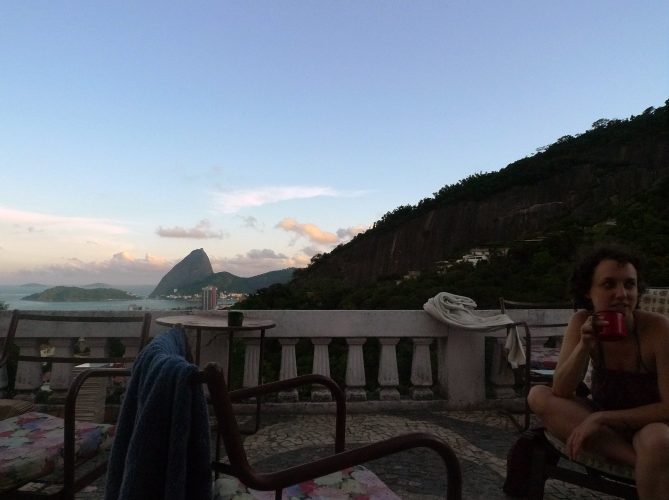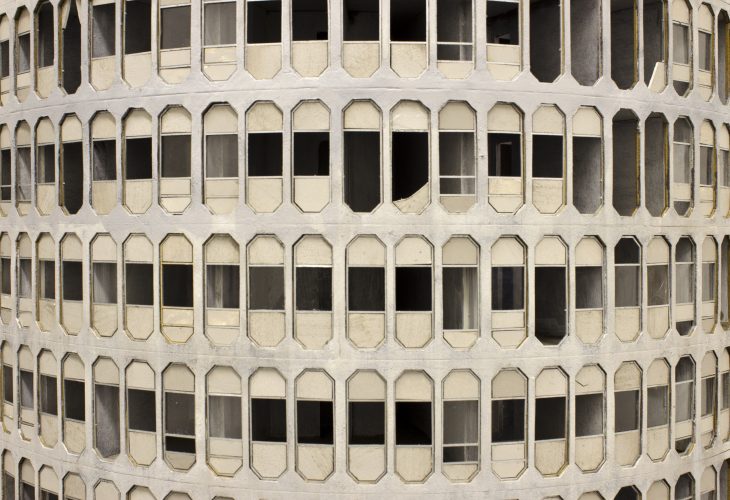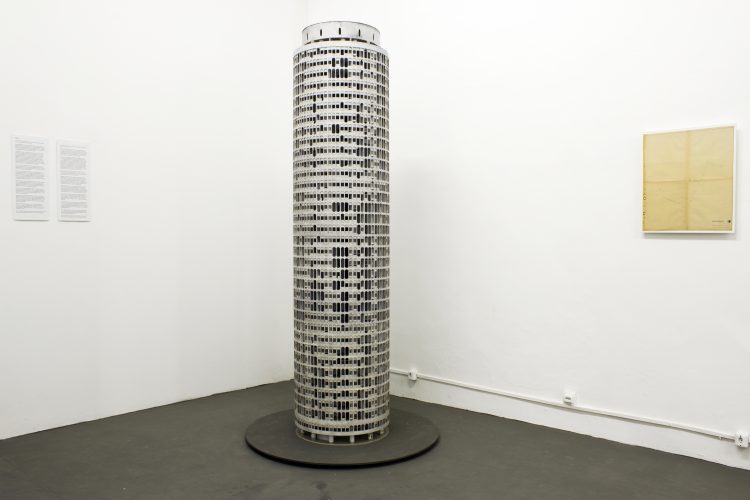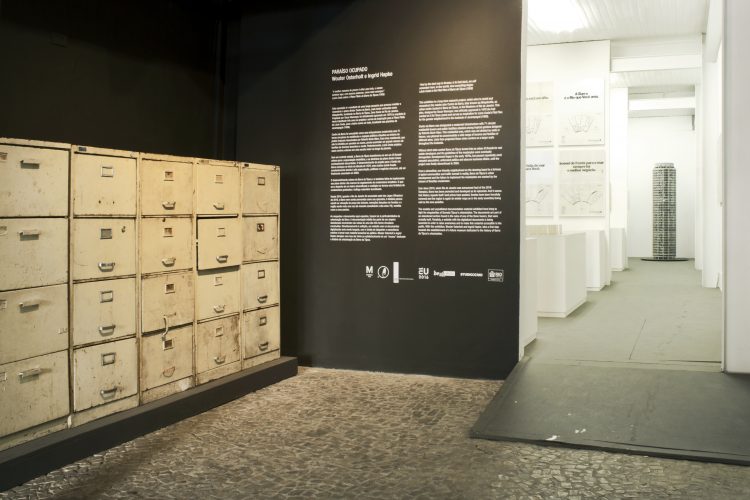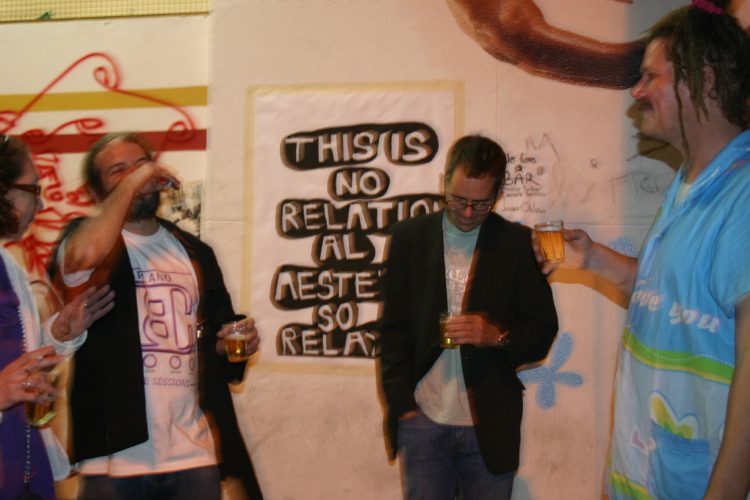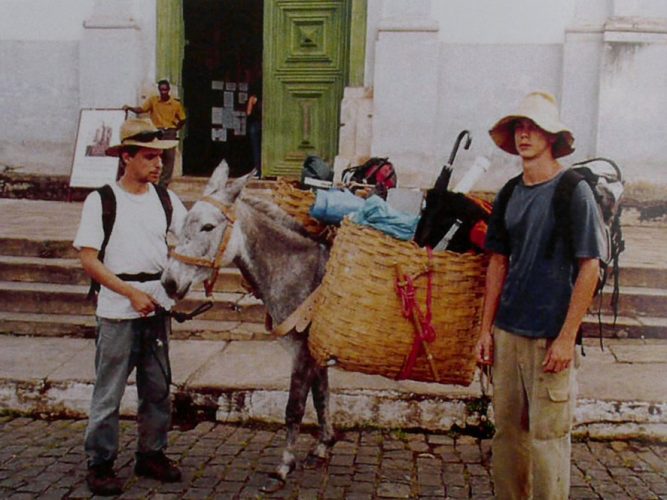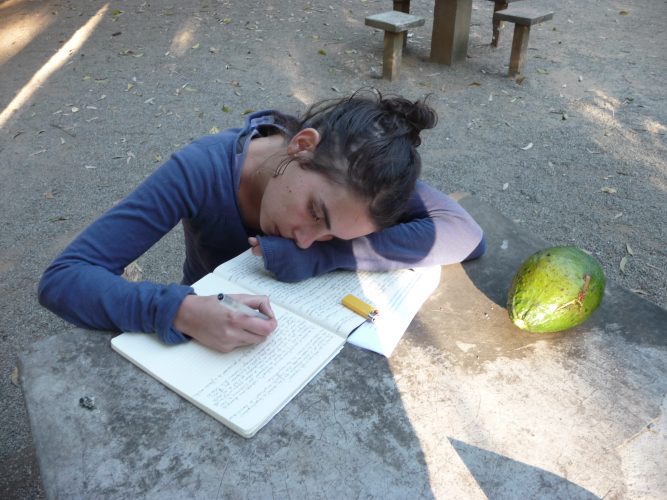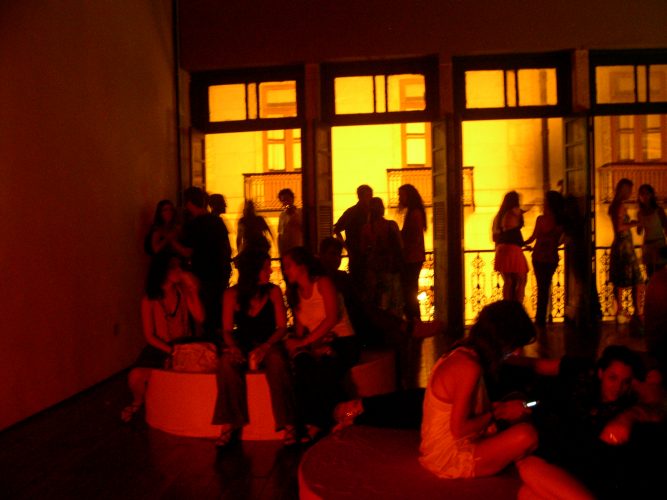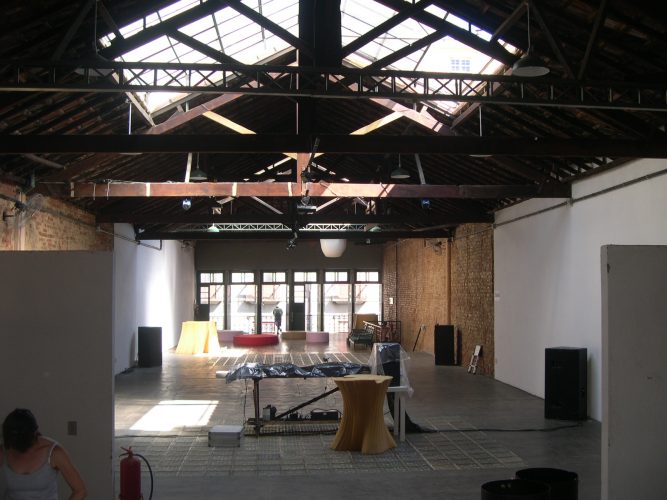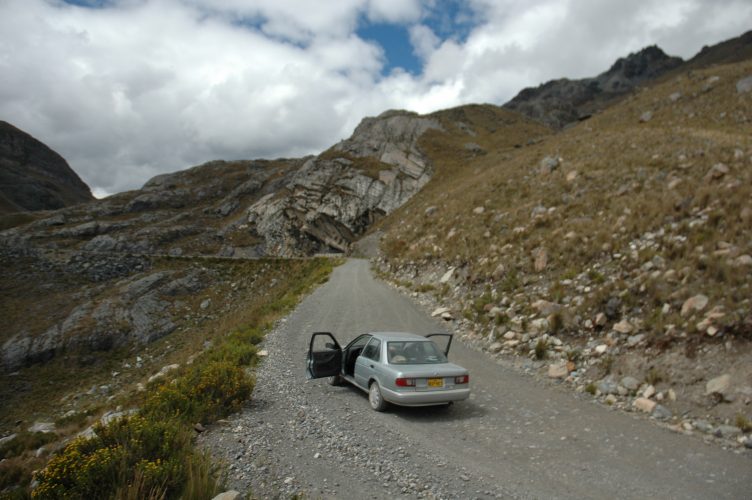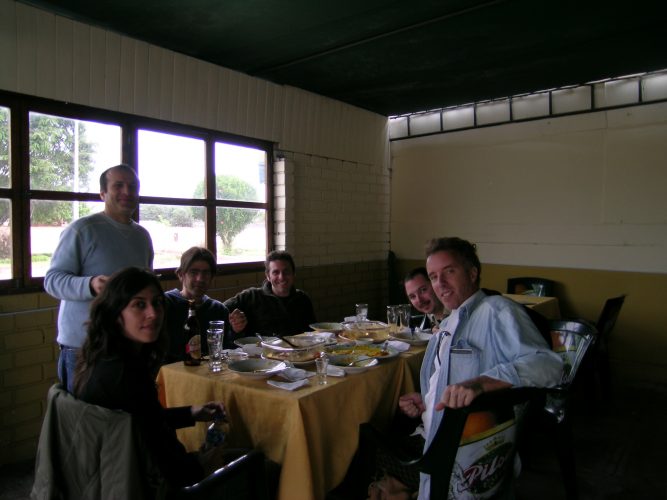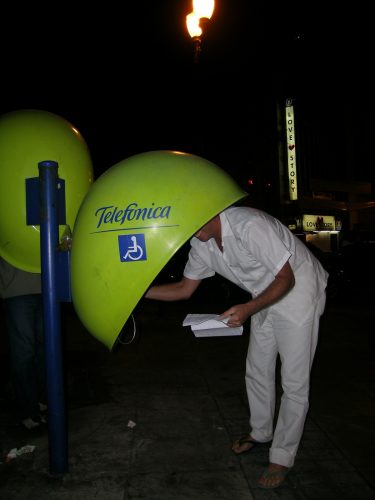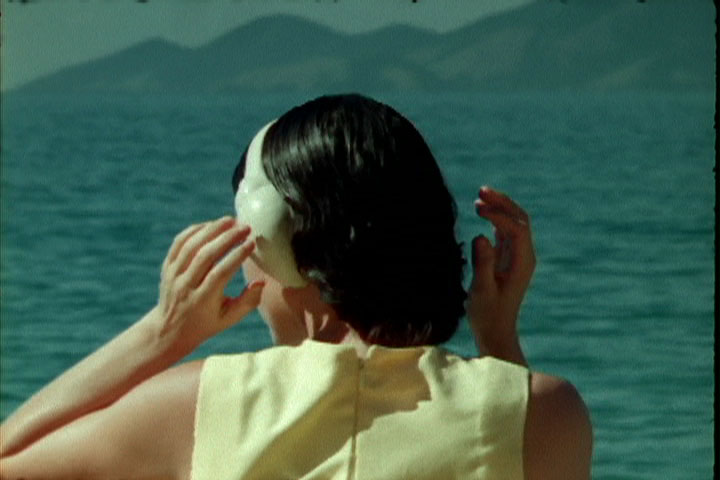Conversa entre Ducha e Helmut Batista
20 anos CAPACETE
Dia 7 de dezembro às 19h
Lançamento dos livros:
+ 20 anos CAPACETE
+ 10 anos Galeria Metropolitiana (Chile)
+ Lugar a Dudas (Colombia)
Com apresentações dos espaços de arte:
• Lugar a Dudas – Victor Albarracín – Cali
• Galeria Metropolitana – Luis e Ana – Santiago
• Casa do Povo – Marilia Loureiro – SP
• Casa Mario – Sebastian Alonso – Montevideo
• Despina – Guilherme Altmayer – RJ
• CAPACETE – Camilla Rocha Campos, Tanja Baudoin e Helmut Batista – RJ
!!!!!!!! LANÇAMENTO DO NOVO PROGRAMA DE 1 ANO DO CAPACETE (2019/2020) !!!!!!!
** na cozinha Tesuo Hida cozinhando Maguro Zuke Don (RS 13.99)
Para baixar o livro CAPACETE clique no link abaixo:
Livro dos 20 anos do CAPACETE
Silvia Rivera Cusicanqui
Silvia Rivera Cusicanqui (born 1949) is a Bolivian feminist, sociologist, historian, and subaltern theorist. She draws upon anarchist theory as well as Quechua and Aymara cosmologies. She is a former director and longtime member of the Taller de Historia Oral Andina (Workshop on Andean Oral History). She is also an activist who works directly with indigenous movements in Bolivia, such as the Katarista movement and the coca growers movement.
Silvia Frederici
Alexandra Baudelot
Co-director of les Laboratoires d’Aubervilliers (Paris northern suburbs) since 2013 with Dora Garcia and Mathilde Villeneuve, Alexandra Baudelot has worked for several years as an exhibition curator, editor and author. In 2009 she created and managed Rosascape, a platform for contemporary creation in Paris that straddles multiple spheres as a private art centre and production unit, exploring the contexts of production and reception of works as well as their mode of display by attending to specific notions such as the question of private, intimate space vs public and political space. The decision to house Rosascape in an architecturally defined space — a private, intimate, theatrical space, playing with a tension between interior and exterior space and the domestic character of its surroundings — rather than in a neutral, ‘white cube’ type of exhibition space, stems from a will to perceptibly shift the relationship to artworks and artistic experiences. A critical awareness of the standardisation of exhibition spaces in the context of globalisation, and thus of the standardised relationship between the artwork and the public, led us to seek and occupy a site and experiential sphere of a different kind — a left-field space — and displace, in this way, our relationship to contemporary art. At Rosascape she curated exhibitions with Katinka Bock, Ulla von Brandenburg, Raymond Gervais, Benoît Maire, Vittorio Santoro, Berger&Berger, and Adrian Dan and produced several artists books. + Since 2013, as co-director of Les Laboratoires d’Aubervilliers, she develops a work with Mathilde Villeneuve and Dora Garcia based on two factors — a laboratory that research, test out and experiment, and the town of Aubervilliers (at the periphery, on the outskirts, a melting pot of industrial workers, and a major site of immigration). The very particular relationship between these elements is the context in which artists-in-residence make and develop their projects. The collegial approach aims to establish collectives that enable new forms of intersubjectivity to take shape. In collaboration with the co-direction team, she works on developing novel communities that alter and transform according to the shifts and developments in their work. From the very beginning, the Laboratoires d’Aubervilliers has been committed to reducing the gap between informed and uninformed audiences, and to supporting the most complex and hybrid artistic practices while ensuring no one feels excluded. The institution is renowned for the collective productions it has generated, for fostering collaborations between artists across the entire spectrum of disciplines, and for its participatory, community-building projects involving local residents. In 2016 she co-curated the event « Performing Opposition » intiated by Les Laboratoires d’Aubervilliers at Capacete (Rio de Janeiro) and Casa do Povo (Sao Paulo). She is the author of the book “Dispositif chorégraphique” (Les Presses du Réel, Nouvelles scènes collection, 2005) on the work of choreographer Jennifer Lacey in collaboration with the scenographer Nadia Lauro, the editor of the monograph “Grimaces du réél” on the choreographer Latifa Laâbissi (Les Presses du Réel, Nouvelles scènes collection, 2015), “Portraits d’Aubervilliers” by Lenio Kaklea with Lou Forster (Les Laboratoires d’Aubervilliers, 2018), “Zarba Lonsa _o_o__o Mesonya/ » an editorial project by Katinka Bock, (MER. Paper Kunsthalle, 2018) In 2016 she curated a serie of three exhibitions with Ulla von Brandenburg at The Power Plant (Toronto), The Darling Foundry (Montreal) and ACCA (Melbourne). -
Mathilde Villeneuve
Thelma Vilas Boas
Fabiane Borges
[gview file=”http://capacete.org/wp-content/uploads/2015/03/CAPACETE20ANOS-PAGINAS-fabiana.pdf”]
….
Is an artist, psychologist and essayist. Currently she is doing post-doctoral research in Space Culture in Visual Arts at nano/ppgav/eba/ufrj. She works in the intersection between art, technology and subjectivity. Is responsible for the organization of four books about art, internet, hacktivism, one of the articulators of the technoshamanism network: https://tecnoxamanismo.wordpress.com/blog/
[ess_grid alias=”Galeria de foto” layers='{“custom-image”:{“00″:”3925″,”01″:”3923″,”02”:"3921″,”03":”3919″,”04″:”3917″,”05″:"3915“,”;06″:”3913″,”07″:”3911″;,”08″:"3909″},"custom-type“;:{“00″:”image”,”;01″:"image”,”02":&;;quot;image“;,”03″:”image”,”04":”image”,”05″:”image”;,”06″:”image”,”07":”image”,”08″;:”image”;},”use-skin”:{“00”:&;;quot;-1″,";01″:&;;quot;-1″,”02″;:”-1″,”03":”-1″;,”;04″;:”-1″,”05″:&;;quot;-1″,”06":”-1″,”;07″;:”-1″;,”08″:”-1″;}}’;;;][/ess_grid]
Ronaldo Lemos
Ronaldo Lemos is a Brazilian academic, lawyer and commentator on intellectual property, technology, and culture.
Lemos is the director of the Institute for Technology & Society of Rio de Janeiro (ITSrio.org), and professor at the Rio de Janeiro State University’s Law School. He is also a partner with the law firm Pereira Neto Macedo, and a board member of various organizations, including the Mozilla Foundation, Accessnow.org, and Stellar. He was nominated a visiting professor of Law, Technology and Policy at Columbia University´s School of International Public Affairs in 2017 and 2018 . He was appointed as a Young Global Leader by the World Economic Forum in 2015. He was appointed in November 2015 as a fellow by Ashoka, a civil society organization founded by Bill Drayton.
Pedro De Niemeyer Cesarino
Pedro de Niemeyer Cesarino é professor do Departamento de Antropologia da Universidade de São Paulo. Publicou recentemente os livros Oniska – poética do xamanismo na Amazônia (Editora Perspectiva, 2011,3o lugar do Prêmio Jabuti de Ciências Humanas), e Quando a Terra deixou de falar – cantos da mitologia marubo(Editora 34, 2013), além de artigos e textos literários. Tem desenvolvido pesquisas sobre etnologia indígena e interfaces entreantropologia, literatura e arte.
Anne Szefer Karlsen
Curator and writer, currently Head of Research for Bergen Assembly (2018-) and Associate Professor of Curatorial Practice at the Faculty of Fine Art, Music and Design, University of Bergen (2015-2021). She was Director of Hordaland Art Centre in Bergen, Norway (2008-14).
Postcard from Rio de Janeiro:
“I wake up around 5:30 a.m. on a Sunday morning, roused by a big group of people singing somewhere close by, almost chanting. It is still dark out, and I am in the neighbourhood of Glória in Rio de Janeiro. I learn through «worldtravelguide» that today we will celebrate Santo Antonio – with street markets, food and drinks. As well as couples jumping across bonfires and mock weddings. The same source reveals that this is the first of three saints to be celebrated in June and July – Festa Junina – and that the celebrations are connected to what we in the North know as Midsummer. But across the equator winter is coming. + Since I was here in November last year inflation has skyrocketed, electricity is something like 60% more expensive, there is a real possibility of catching dengue fever – if not the full-fledged version, then certainly what is commonly referred to as ‘baby-dengue’ which confusingly enough also starts with rashes on the chest and arms, intense pain behind the eyes that does not go away until four to seven days later, a dash of high fever and a lack of appetite. The corruption scandal in the semi-public oil company Petrobras doesn’t seem to end, the government has cut the budgets for health and education, and in Rio violence is on the rise. I have learned to distinguish fireworks from gunshots, and I am both happy and scared when passing the drug trafficking bar across the street. Happy because the bar owner and his crew seem to keep the peace in the street, scared because a slice of Brazilian everyday realism can be served up at any time. Museums must cut in their opening hours because they cannot afford the cost of air conditioning, and everyone I meet is complaining about a lack of discourse production in the art. A teacher in the public school system makes just under 2,000 Reais, equivalent to about €350. For parents with high-level education, but no money to put their children through private school, keeping their kids out of public school is a real option, resorting to home schooling and an environment of learning in a network of adults. I spend every day with a group of 12 artists, curators, educators, writers and producers taking part in the yearlong programme at Capacete: A para-educational initiative with participants from many parts of the world, but also from Brazil. This creates a dynamic in the group where fact is mixed with curiosity. Wednesdays are particularly busy. This is the day when the students (participants… residents… call them what you like, because no one has really taken the time to name the roles they are inhabiting this year) open the doors and invite the public for presentations, food and drinks. Three weeks ago I was sitting in the hot seat together with my colleague Daniela Castro presenting ’Self Organised, now available in Portuguese’. While we were talking about self-organisation, homemade burgers and the potent mix of lime, sugar and cachaça – distilled sugar cane – was served in the illegal bar. Next week the Wednesday night was a bit louder, resulting in the neighbour throwing eggs with surprising precision at the public and the police showing up. And unlike in Norway, the debate about police carrying firearms is long gone in Brazil: When they knock on the door they come carrying machine guns. Thursday to Tuesday is typically filled with seminars presented by guests, or small excursions organised by the participants themselves. The week after our seminar we whizz through yet another tunnel, four mountains to the left from Ipanema on the map, and get off at the shopping centre AutoEstrada Lagoa-Barra. We cross the 14-lane motorway and meet the artist Wouter Osterholt, who will guide us around the tower where he and Elke Uitentuis filmed the video work Paraíso Ocupado. Barra da Tijuca is a neighbourhood in the southwest area of the city. In the 1960s the city planner Lucío Costa drafted a modernist master plan for 76 towers, which were designed by Oscar Niemeyer. Only four towers were realised – one of which collapsed during construction, two are in use today and one is a modern ruin. It was never completed. The characters in Paraíso Ocupado stage a script in English for a commercial film created to promote the area, geared towards foreign buyers. The artist found the script in the ghost tower, in an ‘archive in chaos’ which still exists today on the second floor. We try not to show too much interest in the two rooms filled with archive folders, blueprints and an old typewriter when we move through the three lower floors, guided by the guard’s flashlight through the dark and spiraling staircases. Finally, on my last day in Rio I have a chance to go to MAM – Museu de Arte Moderna do Rio de Janeiro. The museum has been between exhibitions the whole time I have been here, but Wednesday last week I went to see designer Manuel Raeder for a sneak preview of the exhibition Marginália 1 – Rogério Duarte. It is, as the title indicates, a survey exhibition of the practice of graphic designer, musician and poet Rogério Duarte. Duarte is the man behind the influential essay ‘Notes on Industrial Design’ (Notas Sobre o Desenho Industrial) from 1965. He also designed and edited several issues of the magazine Movimento 1, which started in 1962 and was seminal for a whole generation. Duarte was thus part of establishing the well-known Tropicália movement. Today he is a man in his late 70s, marked by a long and tumultuous life – largely thanks to the treatment he endured during the military dictatorship in Brazil from 1964 to 1985. Many on the Norwegian art scene will recognise the name Capacete from a while back when the Office for Contemporary Art Norway offered residencies for artists and curators there. Manuel Raeder and Wouter Osterholt also have links to Capacete. It was during a residency a few years ago that Osterholt came across the towers and his interest was sparked. And the exhibition at MAM has previously been on display in Europe, then partly produced by Capacete. And like so many guests before and after them, here they are again to continue their projects. There is something about this structure, whose name translates as ‘helmet’, which focuses your senses and directs your gaze. And for a brief moment I also have had the privilege of being part of this – as a stowaway, witness or colleague, my role has been just as ambiguous as everyone else’s – yet it all seems logical. -
Bik Van der Pol
[gview file=”http://capacete.org/wp-content/uploads/2014/03/CAPACETE20ANOS-PAGINAS-bik.pdf”]
….
Bik Van Der Pol. is the artists duo Liesbeth Bik (born 1959) and Jos van der Pol (born 1961) who work together since 1994 as conceptual artists and installation artists.
[ess_grid alias=”Galeria de foto” layers='{“custom-image”:{“00″:”3667″,”01″:”3665”,”02":”3663″,”03″:”3661″,”04″:”3659″},”custom-type”:{“00″:”image”,”01″:”image”,”02″:"image”,”03″:”image”,”04″:”image”},”use-skin”:{“00″:”-1″,”01″:”-1″,”02″:”-1″,”03":”-1″,”04″:”-1″}}’][/ess_grid]
GIA
A Residência, a Rua e os Encontros
“A primeira intenção tinha um sentido místico, sem necessariamente apelar para o lado religioso, mas achamos por bem fazer uma moqueca baiana para iniciar a residência no Capacete naquele ano de 2013. Rua do Russel, 300, nosso endereço por dois meses: o QG[1] da Glória. Foi ótimo, pois significava bom presságio. A cozinha da casa havia nos aceitado e isso, para nós, é fundamental, já que possuímos uma forma bem definida de criação em que a culinária ganha status de burocracia e a cozinha de escritório. Essa maneira de operação de ideias tem nos acompanhado desde que nos conhecemos por GIA. + Mandinga conceitual realizada, os louros começaram a aparecer. Em função do projeto de um grande amigo, iniciamos a residência com uma experiência de ordem culinária. É necessário dizer que, além da comida, a amizade é um elemento importante para o processo de criação do GIA. Organizou-se na casa o projeto cozinha internacional, no qual todas as quintas-feiras à noite recebíamos grupos de artistas, arquitetos, desocupados necessários, dançarinos amadores e comilões de natureza para saborear quitutes de todo o canto do mundo, além de conversar sobre tudo. Os jantares eram importantes, pois ressaltavam o conceito de convívio e de estar juntos que pensávamos no contexto da residência, ideia que continuamos levando adiante. Residir, morar, cuidar. Pode parecer estranho para um grupo que tem a rua como suporte de realização dos seus trabalhos de arte, mas esse ponto de vista não tem procedência. Sempre usamos o espaço casa como local de criação, sempre em volta do fogão, com muito samba e amigos e não poderia ser diferente no Rio, pooorra! As ações são para a rua, a lapidação de sua execução: a cozinha. Será necessário falar, adiante, sobre as ações que estavam sendo realizadas naquele momento – apesar deste pequeno texto desejar tratar do conceito de residência, de um lugar mais aconchegante e afetivo. Sendo assim, nosso processo de absorção foi muito orgânico em relação ao dia a dia de moradores e não de turistas. Foi fundamental o reconhecimento da vizinhança mais próxima, pessoas que já interferiam no dia a dia da cidade, como o entregador de água que produzia vídeos – Fala My Brother -, a feira de orgânicos da frente do prédio que chutava a canela de modelos menos inteligentes de postura alimentar. A identificação que os nordestinos tinham conosco, e assim foi… Coisas da vida, que iam acontecendo num fluxo contínuo… Viva Batatinha! Falando em Batatinha, não precisou andar muito para dar samba. Na mesma praça da feira de orgânicos topamos com uma roda, Sambastião, por causa do padroeiro e da estátua instalada na mesma praça, bendita moqueca! O GIA, desde sempre, articulou táticas e fazeres multifacetados para dar visibilidade e comunicar – comunicar no seu significado primário, no sentido de tornar comum determinada mensagem, a comunicabilidade antes da comunicação – seus enunciados, construir e partilhar suas narrativas em meio às brechas e fissuras do tecido urbano, de maneira inesperada, atuando nas rotas desviantes do improvável. Dessa maneira, durante os dois meses de residência no QG da Glória, foi possível refletir e discutir sobre o Choque de Ordem que atingia a população da capital carioca naquele momento, e maneiras potentes de criticar seus desdobramentos. O GIA, então, declarou em seu blog: Podemos destacar a violência que o termo carrega: “choque”. Triste analogia ao cumprimento da ordem via choque elétrico, cada qual que faça sua comparação. Fora do campo da linguagem, a violência continua sendo uma premissa, em vários aspectos, sobretudo contra a população de baixa renda, ou seja a maioria. Os interesses deste choque de ordem são bem explícitos[2]. A conclusão do grupo foi assertiva: Choque dói. Diante dessa constatação, o GIA achou necessário espalhar pela cidade essa mensagem, formulando uma espécie de campanha não oficial. A marca da prefeitura do Rio de Janeiro, então, teve seus elementos alterados – num típico détournement situacionista – e foram produzidos dezenas de adesivos (em uma produção caseira de serigrafia realizada na residência), colados em diferentes locais da cidade. O adesivo laranja se camuflou perfeitamente nas lixeiras cariocas, permanecendo ali como um parasita, disseminando uma contra-informação[3] por tempo indeterminado, em meio à contingência urbana. Fica claro, então, que grupo desejava se articular no contra-fluxo da imagem consensual que permeia o Rio de Janeiro, cidade maravilhosa: capital do carnaval, das praias, do turismo e do lazer. Percebendo que nem tudo era tão maravilhoso assim, o GIA, passeando pela cidade, também colou em locais específicos adesivos com a mensagem Do not take a Picture (Não fotografe), com intuito de chamar atenção para áreas degradadas e invisibilizadas na capital carioca. As mensagens sinalizavam pontos de tensão, operando desvios e pequenos curtos-circuitos na concepção aparentemente unânime do “Rio de Janeiro Cidade Espetáculo”. Voltando à residência: já estamos acostumados a experiências de convívio criativo. Aliás, desde o nosso QG do Santo Antônio, em Salvador, a nossa residência na Bahia, a amizade é realmente primordial para a amálgama do grupo. Fator que, de alguma maneira, tornou a residência no Capacete redundante. Não esperávamos – será que alguém esperava? – algo diferente do que já somos: a residência propriamente dita e as intervenções nas ruas como continuidade de nossa vida cotidiana, uma sintonia de nós com a casa e simultaneamente com os espaços heterogêneos que compõem a cidade. O QG da Glória: uma excelente biblioteca, uma vista maravilhosa, ressaltando uma belíssima árvore, que rompe com a gravidade e nos olha no fundo dos olhos, se coloca na mesma altura de nossos seis andares. A cozinha dispensa apresentações. O resto não importa, mas sem dúvida merece elogios. Impossível dizer quantas pessoas passaram por lá − o mesmo pode-se dizer do QG da Bahia. Sendo assim a mais crua realidade é melhor dizer: estávamos em casa. [1] O QG – Quartel General- é um espaço de encontro, pensamento e ação, trabalho que já foi realizado pelo GIA em diversos lugares. O trabalho consiste na produção de um espaço temporário no qual os artistas convivem com o público, propondo instantes de partilha e convívio – através de refeições compartilhadas, troca de ideias, disponibilização do acervo do grupo, festas, rodas de samba – sendo que muitas ações e intervenções surgem desses potentes momentos de convívio. Dessa maneira, a participação do público é de fundamental importância para a realização do QG, que assume diferentes configurações a depender do lugar onde se desenvolva: plantas, instrumentos musicais, lona amarela, comida e afeto são alguns dos elementos que compõem o QG do GIA. [2] Disponível em: http://giabahia.blogspot.com.br/ [3] Para o artista visual Cildo Meireles, uma contra-informação é aquela que circula por circuitos alternativos, descentralizados, que se opõem às mensagens veiculadas pelas mídias oficiais, como televisão, rádio, jornais, etc. -
Max Hinderer
Max Jorge Hinderer Cruz is a writer, editor and philosopher who works as professor, cultural critic, and curator, since 2011 he is a frequent collaborator of Capacete. 2014 Capacete translated and published his and Sabeth Buchmann’s book “Hélio Oiticica and Neville D’Almeida: Block-Experiments in Cosmococa – program in progress” (Afterall Books/MIT Press, 2013) from English into Portuguese – in collaboration with Editora Azougue, Rio de Janeiro.
Anton Steenbock
Alexandre Vogler
Siri
Ao contrário do que normalmente se espera da música contemporânea brasileira, o artista sonoro SIRI, faz arte contemporânea, misturando, música, performance, instalação e vídeo-arte. Em seu trabalho de estréia, “Siri” (independente), de 2004, o músico levou aos palcos sua parafernália musical e encantou o público com seu inusitado instrumento: uma sucata de Fusca 69 com motor, latarias e capota. Uma verdadeira orquestra urbana.
Esteban Alvarez
Buenos Aires, 1966. Artist and curator graduated from Escuela Nacional de Bellas Artes P. Pueyrredón, BA(1992), Master of Middlesex University (London,2000). Artist in Residence at Gasworks (London,2000), participated in Hwei-Lann Workshop (Taiwan,2003). He received awards including: 2 First Prize, Second Biennial of Printmaking(Colombia,1998), Awards: British Council(1999), FNA(2002), Fundación Antorchas(2003) & Pollock-Krasner(NY, 2004). Curated exhibitions: A finger on the River, CCEBA(BA,2006). Participated in exhibitions such as: Biennial of the End of the World (Ushuaia,2009); Variation Time (Munich, 2009); Alucine Video Festival (Toronto,2009); SAR07 Macro (Rosario, 2007) Levity (NY,2007); ACC Gallerie (Germany,2006), Art and Engagement (Spain,2005), PR04 (Puerto Rico,2004), False Impressions (England, 2003) Contemporary Art Biennial das Americas (Fortress,2004); Contemporáneo1 Malba (BA,2002) Unterwegs nach Timbuktu (Berlin,2002) Solo Exhibition: Gallery-UECLAA Essex (Colchester,2000).
Tamara Stuby
Benjamin Meyer-Krahmer
Luisa Mota
Gabriela Vanzetta
Keila Kern
Nicanor Araoz
Nicanor Aráoz (Buenos Aires, 1981) produces objects, installations and sculptures using as reference images from comics, imagery from the Internet and romantic mythologies taken from gothic art. In his works, procedures involving the making of a surrealistic object, such as the assembly of dissimilar elements and a oneiric component, take on frantic forms resembling nightmares where pleasure and pain seem to merge. Aráoz uses materials as if they were to expiate sadistic sensations and takes them to the utmost limits of expressivity and torsion. In narrative scenes, he mixes plaster monsters, amorphous masses of resin, trainers, neon lights and biscuits with embalmed cats, mice and birds, thus shaping a world of emotional psychedelics with visual references to the domestic environment of an adolescent.
Martin Vitaliti
Bahgavan David
Daniel Steegman
Fabrício Belsoff
Choreographer and performance artist born in Rio de Janeiro (BR) and based in Gießen (DE).
“It might be too obvious to start a text like this, but my experience in Capacete was very inspiring, not only because it offered me the opportunity to receive many inputs from different artists, thinkers and researchers in the field of arts, but especially due to the relaxed and affective environment of sharing practices proposed by Helmut, Daniel and Amilcar. I have nice memories from the warm days we spent together during the summer university 2012 (?). And though i don’t have a continuous contact with the artists i met there, once in a while, when we meet in different art contexts is always a pleasure to catch up and remember things together.”
Mauricio Carmona
Luis Alarcón / Ana Maria Saavedra
Francisca Caporali
Ana Luisa Lima
Ana Luisa Lima (1978) é crítica de arte, escritora e pesquisadora independente com foco em literatura e artes visuais – imagem e narrativa. Editora da revista Tatuí de crítica de arte (2006-2015). Cocuradora do projeto ‘Poemas aos homens do nosso tempo – Hilda Hilst em diálogo’, Programa Rede Nacional Funarte 9ª edição, 2013. É colaboradora da revista sobre mercado de arte contemporânea e colecionismo latino-americano TONIC (Chile). Criadora da Cigarra Editora. Autora do livro ‘16’39” a extinção do reino deste mundo’, São Paulo-SP, 2015. No audiovisual, lançou seu primeiro curta-metragem ‘Zona Habitável’ (13′, Nova Lima – MG, Brasil, 2015). Tem desenvolvido projetos curatoriais e editoriais com foco na produção artística e experimental feita por mulheres. É idealizadora do projeto CODEM.RED – Cooperação de Mulheres em Rede, uma plataforma de organização, colaboração profissional e assistência jurídica para mulheres. Já fez curadorias, escreveu e publicou ensaios sobre artistas e fotógrafos como Farnese de Andrade (BR), Luiza Baldan (BR), Marcelo Silveira (BR), Gil Vicente (BR), Nazareno (BR), Thiago Martins de Melo (BR), Felipe Abreu (BR), Carolina Krieger (BR), Fernanda Rappa (BR), Luana Navarro (BR), Marco Maria Zanin (IT), Leonora Weissmann (BR), Pedro Motta (BR), Serge Huot (FR), Stéphane Pauvret e Christine Laquet (FR). Seus ensaios já foram traduzidos e publicados em espanhol, inglês, francês e italiano.
“Participei da “residência para Gestores Independentes” em 2010. Foi sem dúvidas uma das experiências mais ricas e profundas que pude ter durante uma residência. Em um mês juntos/as, passamos por SP, MG e RJ, conhecendo formas diversas de gestão institucional e autônoma, pública e privada. Generosidade e afeto eram parte do exercício político diário em busca de transformações sejam em nossos próprios modos de conduzir os projetos, tanto quanto nos modos de reinventar um estar-juntos/as enquanto coletividade. Fiz amigos/as que seguem até hoje. Trabalhamos, sorrimos e choramos juntos/as. Seguimos nossos caminhos de maneira que possam se encontrar sempre que possível. “Amar e mudar as coisas me interessa mais” dizia o mestre Belchior.”
Sasha Huber
Sasha Huber is a visual artist of Swiss-Haitian heritage, born in Zurich (Switzerland) in 1975. She lives and works in Helsinki (Finland). Huber’s work is primarily concerned with the politics of memory and belonging, particularly in relation to colonial residue left in the environment. Sensitive to the subtle threads connecting history and the present, she uses and responds to archival material within a layered creative practice that encompasses video, photography, collaborations with researchers, and performance-based interventions. She has also discovered the compressed-air staple gun as a tool capable of producing visually arresting works that also functions like a symbolic weapon, offering the potential to renegotiate unequal power dynamics.
Mauricio Marcin
“I live in Mexico City, my full name is Mauricio Marcin Alvarez, that hasn’t changed. I now work in a space I co-funded with 4 other guys and girls called Aeromoto. Recién noto que han pasado cerca de siete años desde que fui a Capacete. Tengo tantas hermosas memorias que me resulta complicado alejarme del sentimentalismo. Ni modo. Diré que descubrí en compañía y en diálogo con los gestores dependientes potencias sensoriales, zonas erógenas, sobre la retaguardia y la fragilidad de la vida. Se abrió el telón que dejó descubiertos todos los miedos. Miré un sapo por un instante eterno y en el brotó la sonrisa de Helmut. ¿Habrá sido místico, todo ello? Simonel.”
Rodrigo Quijano
“Con toda sinceridad, la experiencia con capacete en el 2011 fue un poco confusa, pero nunca olvidaré los días pasados con lxs compañerxs en el piso 21 y 22 del Copan. Ahí hice estupendos amigos, tomé mucho café, escribí poemas y miré mucho por la ventana, pero sobre todo conocí entrañablemente a Mauricio Marcín.”
Alicia Herrero
“Como si las palabras almacenaran tesoros, ritmos y sentidos infinitos, residir puede derivar en re-incidir. Así, todo el secreto de una residencia artística estaría oculto en la acción que implica su coloquial nominación. Su mejor meta. ¿Qué otra cosa podemos aspirar de esta experiencia, que no sea incidir una y otra vez de forma intercambiable entre lxs unxs y lxs otrxs? Solo re-in-ci-dien-do una y otra vez, habrá trabajo compartido. Deslocalizarse es siempre grato para mi, no siempre se logra, muchas veces las exposiciones y actividades de agenda, hacen que esto no sea posible, incluso cambiando de lugar. En Capacete se logra, y lo digo por mi propia experiencia ya que la residencia me tomó en medio de la realización de un proyecto para una bienal y dos exposiciones en otros dos paises. Se logra porque Capacete incide en unx y abre el corazón a ser incidido. No solo durante su estadía. Cinco años despúes, un tramo de esa experiencia reaparece en una nueva serie. Incide, reincide, y vuelvo a incidir. Pero hay otros secretos ocultos en las palabras. Residir reincidir puede derivar en resistir. ¿Qué otra cosa se anhela, sino, que una residencia de artistas, logre ser el lugar dónde resistir ciertas normas epocales? Una zona de resistencia, lo es también de emancipación, de aventura y solidaridad. ¿Capacete? Un lugar extra-ordinario del planeta. Una residencia que reincide en ser una resistencia existencia”
Paulina Varas
“Paulina Varas. Madre de Borja, compañera de José. Parte de CRAC Valparaíso www.cracvalparaiso.org e investigadora del Campus Creativo de la Universidad Andrés Bello. Mi experiencia en Capacete fue parte de una residecnia para gestores, investigadores y curadores de América Latina y Brasil en el año 2011. Sao Paulo, Belo Horizonte y Rio de Janeiro repartido en 30 días de encuentros, risas, debates, talleres, frio, calor, comidas, bebidas, bailes, lecturas, exposiciones, caminatas…Recuerdo que tuve que ir al dentista por un pequeño accidente en una muela, y el dentista trabajó tan lentamente en el diente, con pausa, eso me hizo caer en cuenta que mi cuerpo estaba en Brasil…movernos juntos por algunas ciudades de Brasil en avión o autobús fue una manera de componer formas y relacionarnos de una manera que dejó una huella de vínculo en cada una/o, eso que hace que cada vez que nos hemos vuelto a encontrar, nos abracemos con afecto. Capacete-afectos-relaciones-formas de vida-composiciones-intensidades-creacion-poeticapolitica-cuerpos-gracias.”
Elfi Turpin
Mariana Lanari
“I took part in Máquina de Responder, a program that happened in parallel to the 29. São Paulo Biennial in 2010/2011. After the end of this program, a few of us remained working together on a book. Two years later, in 2013, I went to a mobile residency in the Amazone. In this trip, I met Bik van der Pol, also residents at the time, and joined their master program at the Sandberg Instituut in Amsterdam. Since then I leave in the Netherlands. It was through Capacete that I moved to the Netherlands, where I live for 5 years. It’s a radical gesture to encourage artists to not produce work during the residence. It’s a permission to slow down and rather listen, observe, interact, beliving that whatever happens in these periods will inevitably produce result in the future. Capacete is a community of people it has the magic of making you feel part of it.”
Lise Harlev
My work explores the formation of identity and the factors that help construct this feeling of identity, be it nationality, intimate relationships or political views. Though my work has taken on such different forms as silkscreen prints, enamel signs, stained glass and photography, it has always drawn aesthetically on graphic design and explored how a subjective content is expressed with an aesthetic designed for the public. At BAC I will be working on a new piece about remembering and revisiting the place where I grew up.
Cayo Honorato
Cayo Honorato (Goiânia, 1979) é professor do Departamento de Artes Visuais do Instituto de Artes da Universidade de Brasília, na área de Teoria e História da Educação em Artes Visuais. Doutor em Educação (2011) pela Universidade de São Paulo, mestre em Educação (2005) e bacharel em Artes Visuais (2000) pela Universidade Federal de Goiás. Desde 2007, tem pesquisado e publicado textos sobre a mediação cultural, no âmbito das relações entre as artes e a educação, com especial interesse pelas práticas documentárias, extrainstitucionais, assim como pela atuação dos públicos. Também colabora com o grupo Mediação Extrainstitucional, em atuação nas redes sociais. I took part of “Máquina de Responder”, the public programme run by Capacete for the 29th Sao Paulo Biennial in 2010.
“Unfortunately I have no pictures from that. It would be nice to see some of them. That was definitely a significant experience in terms of deepening in the Biennial experience, from critical and also affective perspectives.”
Louidgi Beltrami
Wouter Osterholt
“Paraíso Ocupado is a reconstruction of a failed modernist plan for an urban center located in the West zone of Rio de Janeiro. This plan, designed by Oscar Niemeyer, was officially approved in 1970 and served as inspiration for Lúcio Costa’s Pilot Plan for the greater region. All the documents in the exhibition are part of an abandoned archive found in the ruin of one of the three actually constructed circular towers. A website with the digitalized documents was launched with the exhibition, so the material became accessible to the public. This precedes the ultimate objective of Paraíso Ocupado: the establishment of a museum concerned with the urbanization history of Barra da Tijuca.”
Liz Linden
“James and I absolutely loved our time in Rio— we explored as much architecture and Burle Marx gardens as possible and I know that continues to influence both of our work. We would play chess on the street at night and drink cold beer and sweat and generally feel incredibly lucky to be artists in Rio. It is a fantastically inspiring place to be and we would love to come back, with our kids, sometime soon.”
Otto Berchem
Jean-Pascal Flavien
Livro para ler 2008 – CAPACETE 10 anos
………
Born 1971 in Le Mans, France. Lives and works in Berlin. Jean-Pascal Flavien’s practice combines elements from architecture, sculpture, and the performative, to create works that are both precise and concrete but also poetic and evocative. The models of houses, for example, are generated from settings imposed by the artist. Like preliminary sketches of large-scale paintings, his models for houses are maquettes for possible scenarios and perhaps views from the past or future of these fictional buildings. His altered domestic objects, such chairs, tables, outlets or blinds draw attention to the way in which design and architecture shape our experience of space but also how they can more fundamentally determine our experience of ourselves and of others.
[ess_grid alias=”Galeria de foto” layers=’{“custom-image”:{“00″:”4665″},”custom-type”:{“00″:”image"},”use-skin”:{“00″:”–1″}}';;][/ess_grid]


Ducha
Santiago Garcia Navarro
livro para ler – CAPACETE 10 anos
[gview file=”http://capacete.org/wp-content/uploads/2010/04/livro-para-ler-2010PORT-santiago.pdf”]
…..
I’m teaching at the Art Program of Torcuato Di Tella University, Buenos Aires. I’m also writing, curating some exhibitions, and organizing two readers on contemporary art.
[ess_grid alias=”Galeria de foto” layers='{“custom-image”:{“00″:”4627″,”01″:”4625″,”02″:”4623″,”03”:”4621",”04″:”4619″,”05″:”4615″,”06″:”4613",”07″:”4611″},”custom-type”:{“00″:”image”,”01″:”image”,”02″:”image”,”03″:”image”,”04″:”image”,”05″:”image”,”06″:”image”,”07":”image”},”use-skin”:{“00″:”-1″,”01″:”-1″,”02″:”-1″,”03″:”-1″,”04″:”-1″,"05″:”-1″,”06″:”-1″,”07″:”-1″}}’][/ess_grid]
Amilcar Packer
…..
Amilcar Packer nasceu em Santiago do Chile em 1974 e mudou-se para o Brasil em 1982. Formado em Filosofía pela Universidade de São Paulo, é mestrando em Psicologia Clínica pelo Núcleo de Estudos da Subjetividade da PUC São Paulo. Packer desenvolve uma prática que reconfigura os campos semânticos de objetos, arquiteturas e corpos humanos por meio de ações e intervenções, fotografías, vídeos, instalações, e apresentações em diversos formatos que estabelecem campos relacionais e que buscam subverter as gramáticas normativas dos espaços sociais e os mecanismos históricos de poder. Suas atividades visam neutralizar discursos dominantes, e contribuir para desinstalar dispositivos de opressão instituídos e cristalizados na partilha cultural do sensível – com sua correlata segregação do espaço –; na sedimentação de estruturas de poder – e sua naturalização na linguagem; e nos padrões sociais e socializantes de comportamento – que impõem políticas de homogeneização das subjetividades.
Leonor Antunes
Livro para ler – CAPACETE 10 anos
[gview file=”http://capacete.org/wp-content/uploads/2009/08/livro-para-ler-leonor2008PORT.pdf”]
.….
Leonor Antunes nasceu em Lisboa, Portugal, em 1972. Vive e trabalha em Berlin e Lisboa. Exposições individuais recentes: Credac, Centre d’Art Contemporain, Paris (2008), Isabella Bortolozzi Gallery, Berlin (2005, 2008), Museu da República, Galeria do Lago, Rio de Janeiro (2008), Chiado 8/Culturgest, Lisboa (2008), Barriera, Turim (2007), Air de Paris Gallery, Paris (2007), Dicksmith Gallery, London (2007): expoisções coletivas recentes: Musee d’Art Moderne de la Ville de Paris, Paris (2007), Daymler Crysler Foundation, Haus Huth, Berlim (2007), Carré d’Art Musee d’Art Contemporain, Nimes, França (2007), Pavilhão de Portugal/Museu de Serralves, Coimbra (2006).
Suely Rolnik
Wendelyn van Oldenbourgh
Clara Gensburger
“I hate contemporary art as much as I love Capacete. With my friend Elsa Bourdot, this residency in Sao Paulo was our first stape in the real world of art, just after our studies. I really learned to work (but not necesearly in a productive way) spending three months in Capacete, SP. Reading a lot of texts of Helio Oiticica and Lygia Clark, that I had already read in France, looking of the light of Sao Paulo, I understood them in a totaly different way. I wish a long life for Capacete which is one of this rare place where making art means to make life more interesting than art itself (Robert Filliou).”
Daniela Bershan
Andrea Fraser
El Basilico
Tamara Stuby and Esteban Álvarez
www.tamarastuby.com.ar / www.esteban-alvarez.com
“La primera reflexión se deriva rápidamente en un elogio: es muy difícil sino imposible definir qué es Capacete: un planeta, una fuerza, una condición contagiosa, una filosofía. De la larga y polifacética relación que he(mos) tenido hasta aquí con Helmut, diría que la característica más constante es la de no poder trabajar sin divertirnos mucho, y de no poder divertirnos mucho sin que se convierta, tarde o temprano, en trabajo. Creativo, claro. Siempre. Esa adicción —imparable, irresistible— doble venía, además, con una debilidad especial para el canto de sirena que es lo aparentemente imposible. De allí, miles de incidentes, anécdotas, historias y proyectos (fructíferos o no), que recién me doy cuenta que dejan mucho más asombro, todavía, que sí, decidimos intentar tal o cual cosa y orgullo de lo más puro, que miércoles, sí, logramos tal o cual cosa que fotos o evidencia concreta. Así es la vida. Estoy segura que hubiéramos aguantado mucho menos tiempo en el ejercicio de la autogestión sin su ejemplo –de primera mano, allí en la trinchera— de cómo hacer administración sin alejarse demasiado del caos de la creación, y cómo el afecto y el humor son el suero mágico que conjura el lado más humano (Dr. Jeckyll) de las instituciones, ahuyentando su potencial lado de Dr. Hyde. La colaboración entre El Basilisco y Capacete fue enormemente productiva, permitiéndonos concretar aspiraciones mutuas que antes habitaban las aguas de las sirenas mencionadas, y nuestra asistencia como residentes también floreció de manera imposible de imaginarse antes de estar en medio de ese baile. Resulta muy difícil contabilizar el resultado; nuestros cálculos generalmente se nos escapaban de forma geométrica y así me parece ahora. Diez años después, y todavía queda aprendizaje de todo eso para masticar, el calor de esa amistad sigue y alumbra hacia adelante la admiración por el amplísimo abanico de proyectos, actividades y análisis amasados dentro de ese Capacete.”
Gabriel Lester
……
Past and Future in thin air.
“If there has ever been a possibility to turn back time, this would be a suited moment to do so. However much things would probably turnout to be the same, I would have known things in advance, provided in turning back time, I could remember the future. That’s how I look at it now, I mean, from where I can see things at this point, today. Then, mid-day early July 2006, I found myself surrounded by as much endless future as overwhelming depths of the past. We, Helmut and I, were on our way to one of Peru’s highest mountain peeks of the Andes. Driving our ragged rented car with caution over an endlessly winding and unpaved mountain trail we arrived at a valley so vast and boundless, that my first thought was how we had crossed the ages to enter a pre-historic landscape. And then and there, as I envisioned myself having traveled back trough a loophole in time, soon to be surrounded by long lost wildlife and luscious vegetation, both my past and future flashed by. At the time a substantial part of my fortunate and solid world had started to show cracks and crumbles. In April I had moved back from New York to support my mother in her life’s struggle against lung cancer, only to join Helmut on his journey trough Peru in June and July. It had been my mother’s whish and joy for me to continue my adventures life as much as possible. And at every village or city on the course of our voyage, I rushed into an internet café and wrote home an exhilarated travelers report. It was as if I could share my journey to one of the highest peeks of the world; as if I could bring my mother to where time had stood still and where the air was so pure that it could cleanse all disease. And trough the contact we kept during my travels, it became clear that my latest expedition had in a way become as thrilling to her as it was to me.
+ We stopped the car at the entrance of a cave covered in pre-historic paintings. Stepping out of the car I was overcome by dizziness and the extensive violence of the nature that surrounded me danced before my eyes. Maybe I suffered from some light version of altitude disease and possibly the oscillating travel had exhausted me, what I could feel as the world twisted before my eyes, was a deep confidence and optimism. Then and there everything, next week, next moth, next year, my entire future would be magnificent and all right. Hemlut and I walked around marveling at the valley beneath us, and the mountaintops above. I thought about how I could enjoy being back in Brussels, how I would witness my mother’s recovery and how I would travel to Asia for the first time. Later that day we reached the mountain top at over 5000 meters (3 miles) height. The air at the top was so thin that we could hardly breath or speak. I peered into the distance, imagined that distance to be the depth of time and was sure that in the future we could all live forever.” P E R U . I M P R O V “Capactete’s ROAD lead to my doorstep and an invitation to work and travel a stretch alongside the Pan-American highway was offered and excepted. The journey would lead from Lima (Peru) to Quito (Equator). People asked “what will you do?”. My reply was, that I had been doing several things the past years and that, most likely, I would do one or a few of those things there. However, slowly a concept of what could happen started to take shape. When one thinks of a road-movie, the principle is that between start and finish of a journey a story unfolds. This is a lineal narrative. A story that is told on different levels in time and location is a parallel narrative. I envisioned a road movie constructed as a parallel narrative. Instead of events occurring after each other as the road is traveled, it would seem to all happen at once. With this idea and allot of confidence in Helmut Batista’s and my own ability to connect to people and improvise, I left for Peru via Rio de Janeiro. In Lima both Helmut and I were invited to lecture at ‘La Culpable’ – an artist run space. There we met with several local artist and curators, some of which could advise us on where to go and what to see. Soon after, we left Lima for the Andes Mountains. I felt like a pioneer, traveling on intuition and opportunity. And while driving through the impressive nature we made regular stops to shoot a scene or sequence. The idea to create a parallel movie has never left the project, however confronted with the reality of our travels and in order to work daily in un-predictable conditions, the rules of the concept were loosened to fit the actuality. What had occurred to me during the first days of the travel is that if I was going to work with locals and mostly on an instant basis, I should work with a modus that enabled me to stop the car, mount the camera and start shooting. This principle seems simple and easy, but in order to avoid rather digested exotica and/or tourist snapshots, I needed to challenge the images I was making at all time. This led to a series of improvised scenes – shot during the entire journey trough Peru – where at first I would objectively document a scene or location. As such I documented what was going on ‘for real’; nothing was orchestrated, choreographed or interfered with. The second phase was to engage the documented image – the people and location – and change the objective document into a highly subjective document. As such a ‘natural’ scene had become ‘artificial’. A play between reality and fiction was constructed carefully. After returning to Lima from the Andes, we traveled to the city of Iquitos in the middle of the Amazon rainforest. Colombian/Spanish artist Raimond Chaves joined us together with Peruvian artist Gilda Mantilla who were both researching works the 2006 Sao Paulo biennale had commissioned them to produce. By car and mostly by boat, the four of us traveled trough the rainforest and over the Amazon river, all the while setting up and filming scenes. After a few days stopover in Iquitos we returned to Lima and got on the road to Quito in Equator. In Equator we did not have the opportunity to continue to work, but were invited to lecture at the Catholic university of Quito. All in the entire ROAD journey/project took us trough deserts, over mountains, past the Pacific Ocean, cross the jungle and finally up to the capital of Equator. All the while scenes for the project were shot, alongside photos and other video documents that were stimulated on the spot. At this moment most of the digital material is ripening in some a hard disk. In the near future, with a nice blend of time, a scent of post-production and a touch of drama, the works will be served. Seriously though, the ROAD project was hugely productive and inspiring, leaving me with allot of fruits to be plucked and appropriated in some way. For the moment this feels like a luxury problem, since many of the scenes shot have worked out really well and there is much potential for several works or directions to venture into. Time will tell if the final work will be a parallel edit of a lineal experience or a selection of improvised scenes, narrating small adventures…” Gabriel lester 07.2006 -
Laura Erber
Soni Kum
Sanna Kannisto
Eija Liisa Athila
Paulo Vivacqua
Traplev / Roberto Moreira
Benjamin Moser
Brigida Baltar
“Trabalhar com o Capacete e Helmut Batista foi uma possibilidade de realizar um projeto de forma ideal. Quando eu falo ideal, é conseguir produzir com alegria, entre reunions leves, informais e com grande potência de criação. As vezes, nos reuníamos até na praia. Conheci o Helmut logo que ele veio morar no Rio, no final dos anos noventa.e fomos rapidamente estabelecendo pontes de trabalho, afeto e amizade. Desta forma aconteceu nosso projeto em 2004, um filme em 16 mm, que chamei Maria farinha Ghost Crab. Este filme girava em torno da personificacão do caranguejo de areia conhecido como caranguejo fantasma. Convidei a atriz Lorena da Silva para agir como o animal, correndo fugidiamente e cavando incessantes buracos na areia. Helmut convidou o Seppo Renvall para filmar, ele que tinha o equipamento em 16mm e fazia residencia no Capacete. As coisas iam se encaixando facilmente e Helmut consegue ajustar tudo muito bem. Fomos todos para a Ilha Grande, no Rio de Janeiro e trabalhamos intensamente por uma semana, com uma pequena e vigorosa equipe. Lembro ainda, da atmosfera humorada durante as filmagens, pois Seppo, não falava portugues ou ingles e eu muito menos, filandês, sua nacionalidade. Isso produziu uma longa conversa de mãos por toda a parte.
Ainda o projeto seguiu com desenhos, esculturas, som e em pequena publicação. Minha eterna memoria do Capacete é do organismo vivo que vai se metamorfoseando sempre, criando situações as mais contemporâneas, os formatos mais inesperados e sempre com alegria”
Michael Roy
Michael Roy’s work has the particularity to do without doing: a movie without camera, an art work based on images or texts pre-existent, a fiction based on other fictions. He crosses universes. He combines them. He invites us to appropriate his fictions and works with the purpose to let us create ours. No keys are given to understand the reasons why. We can just imagine. We have to suppose the context . Acting on that way, he transformed the history as an anonymous history, where we can more easily be projected. From fiction to reality, from common to personal, using sometimes actuality, sometimes fictions, mixing sometimes written, or images, or photographies, erasing and playing with the traces, the artist builds a complexe and familiar work. We are close and far at the same time. These stories are ours but different, well known and strange.
Tiago Carneiro da Cunha
“For an early participant in the Capacete program like me, it’s impossible to separate Capacete from Helmut Batista. Helmut was one of the very first people who was actually interested in seeing my work, and this was way before my sculptures and paintings, when I was still into performance and conceptual art, living in London, around 1998/99. He already had a bit of a bad-boy reputation from his performance antics in Vienna. His approach to Capacete was – from the very start- authorial as much as artist-centered and, unlike traditional curatorial and institutional agendas which need to seek a minimum of approval from public and donors, he seemed to only ever want to engage the artists, as both participants and viewers in an ever growing debate. Ultimately he seemed more interested in art’s iconoclastic powers as a dynamic, as an ongoing questioning of formal and conceptual limits, than in any other aspect.
+ I have very fond memories of the time spent at the Rio residency: a warm, welcoming and vibrant place, where Helmut, Denise, Camila and the many others working there acted as generous hosts to the city’s idiosyncratic culture in its various manifestations. A place by artists, for artists, and to this day a vibrant hub for artistic debate, where the local community is able to gather and engage with issues and practices from around the world. After all, more than a place, Capacete is a constantly self-questioning approach, which is precisely what has allowed it to operate so successfully under such multiple formats -from newsstand to gallery to residency to film-school to university- in Rio, Sao Paulo, and now Athens.” -
Marcos Chaves
Nasceu no Rio de Janeiro em 1961, e iniciou sua atividade artística na segunda metade dos anos 1980. Trabalhando sobre os parâmetros da apropriação e da intervenção, sua obra é caracterizada pela utilização de diversas mídias, transitando livremente entre a produção de objetos, fotografias, vídeos, desenhos, palavras e sons.
Joachim Koester
Seppo Renval
Jun Nguyen-Hatsushiba
Marepe
Michael Kvium


Christian Lemmerz


Johan Grimonprez
“In 1979, when he was thirty-nine, Jim Lewis decided to try to find his identical twin brother, from whom he was separated at birth. Six weeks later, Jim Lewis knocked on the door of Jim Springer. The moment they shook hands, they felt close as if they had known each other their whole lives. Not only that, they also learned about an amazing series of coin- cidences in their twindom. To begin with they realized they both were named Jim by their adoptive parents. Both had grown up with adoptive brothers called Larry. Both had married girls named Linda, divorced them and then both married girls named Betty. Both had named their sons James Allan. Both had owned a dog named Toy. Both chain smoked the same make of cigarette. The twins were fascinated, not only in these similarities in experience but by their mental similarities—one would start to say something and the other would finish it.”
Tsuzuki Kyoichi
Nobuyoshi Araki
Sharon Lockhart
Teatro Amazonas (1999)
In Teatro Amazonas (1999), an audience seated in the neoclassical opera house of the same name in Manaus, Brazil, looks back at the camera and the viewer throughout the duration of the film. Photographed from a stationary camera positioned on the stage at the front of the theater, one unedited take shows the audience listening to a live performance by the Choral do Amazonas choir. The musical score, an original choral composition written by Californian composer Becky Allen, begins with a solid chordal mass which gradually becomes silent over twenty-four minutes. As the sound of the choir diminishes, the audience sound rises.
Uri Tzaig
Rubens Mano
Shimabuku
Helmut Batista
Oscar van der Boogard
Ana Infante
Ricardo Basbaum
Margit Leisner
Margit Leisner was born in Curitiba in 1971. She graduated in Visual Arts at the F + F Schule für Kunst und Mediendesign Zürich. Her artistic practice concerns contexts related to performance art culture and its possibilities as an open system in the field of arts. Curatorial practice is a key to her work. Since 2014 she runs Galeria Farol Arte e Ação, a conteporary art gallery devoted to the notion of mobility. She lives and works in Curitiba, Brasil.
——
“In 2007 I flew to Rio for 10 days to work. One night I landed in an artist talk at Capacete in Santa Teresa. Amazing 0.2: Helmut, who I had met 5 years before in Faxinal das Artes – and never seen since then immediately recognizes me asking the question of freshly gone times: – What are you doing here, woman?
Amazing 0.1: as I was leaving the venue someone literally fell on my arms. I hold that living body with surprise. It was the poet Alex Hamburger. – Nice to meet you!
I flew back to my hometown in Curitiba, did not even unpack, a week later I was in Rio at Casa da Denise for 15 days, stayed 20. And in this way I would spend the next 3 years migrating among the houses within the complex of Capacete and also in São Paulo at Copan where thanks to a residency grant I have started the open series As férias do cineasta / The vacations of the filmaker.
For a lonely ganger with a rather unusual background at that time – specially for local standards; Capacete meant a field of perspectives where I could embody and affirm the practice of an errant thinker on a daily basis. Capacete is a kind of earthly interface of mental spaces, it is connecting ideas and positions in art sustained by otherness, pleasure, randomness, void, presence, action. To be happy as an artist with a jewel of references and still the taste of morning coffee with Denise and Helmut. Amazing 0.0, projects vibrating on my table right now are still completely connected to people who I have encountered and to the questions that have developed since then. Love. Relax. Capacete.”
Mabe Bethonico
“I teach at UFMG since 2002. In 2018 I will be living in Geneva, in a sabbatical leave. The making of my book was supported by Helmut, who followed up the construction, supportingly, until the end. The research was done for over a year in Geneva, and it is presented in the introduction of the book itself: it is a project of translation, that later developed in an exhibition in São Paulo, where the book played a main role. The work was done away from Rio and somewhat autonomously from Capacete’s space, and I came to Rio to launch it and later do debate about it. There was a nice engagement/ debate after the presentation and it was of course, pleasant as usual, with great culinary, thought especially for the day. I am thankful to Helmut, to have supported such adventurous enterprise, which involved a long production. The book came out as part of the series Livro para…”









